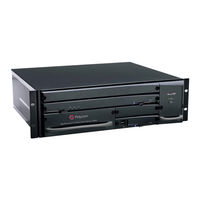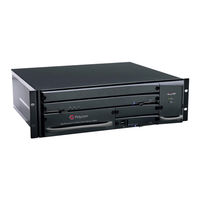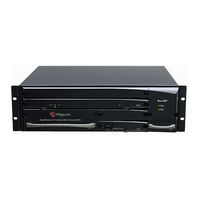Polycom RealPresence RMX 2000 Manuals
Manuals and User Guides for Polycom RealPresence RMX 2000. We have 4 Polycom RealPresence RMX 2000 manuals available for free PDF download: Administrator's Manual, Deployment Manual, Getting Started Manual, Hardware Manual
Polycom RealPresence RMX 2000 Administrator's Manual (1101 pages)
Collaboration Server
Table of Contents
-
Overview32
-
-
-
-
-
Flag Settings154
-
W448P Resolution156
-
-
Content Settings166
-
-
-
-
Video Preview219
-
Lecture Mode236
-
Closed Captions254
-
-
-
Meeting Rooms
299 -
-
-
SIP Factories317
-
Address Book
323 -
-
Reservations348
-
-
-
Today View351
-
-
-
-
-
-
-
-
-
General Tab402
-
Participants Tab406
-
Information Tab408
-
-
-
-
Multi-Selection434
-
-
-
-
RSS Systems486
-
Recording Layout493
-
-
-
-
Entities508
-
-
LAN Redundancy543
-
Network Security
563-
Guidelines565
-
-
Hardware Monitor588
-
-
IVR Services
597-
Adding Languages599
-
Gateway Calls
654-
Call Flows655
-
-
-
-
-
-
-
System Alerts723
-
-
RMX Time726
-
Resource Reports735
-
Audible Alarms762
-
-
Guidelines767
-
Sample 2 Banner768
-
Banner Display770
-
-
Activex Bypass790
-
-
-
-
-
-
Guidelines883
-
-
-
-
Application984
-
-
-
-
-
Cisco TIP Support1023
-
-
ICE Active Alarms1036
-
Troubleshooting1037
-
-
-
-
-
Call Flows1044
-
Call Flow1051
-
Administration1052
-
Cisco Equipment1053
-
-
-
Call Flow1070
-
-
Administration1071
-
-
Encryption1080
-
-
Endpoints1084
-
-
-
Known Limitations1088
-
-
-
System Flags1099
-
Advertisement
Polycom RealPresence RMX 2000 Deployment Manual (174 pages)
Collaboration Server Deployment Guide for Maximum Security Environments
Table of Contents
-
-
-
-
List Pane81
-
Status Bar81
-
MCU State83
-
Address Book83
-
-
Endpoint Names101
-
Text Indication103
-
-
-
-
-
-
Guidelines148
-
-
-
Testing159
-
-
Troubleshooting
165 -
Polycom RealPresence RMX 2000 Getting Started Manual (86 pages)
Collaboration Server
Table of Contents
Advertisement
Advertisement
Related Products
- Polycom RealPresence RMX 1500
- Polycom RealPresence 2000
- Polycom RealPresence Collaboration Server Virtual Edition 1800
- Polycom RealPresence Collaboration Server Virtual Edition 2000
- Polycom RealPresence Collaboration Server Virtual Edition 4000
- Polycom ReadiManagerLX100
- Polycom RAS200A
- Polycom RealPresence RMX 4000
- Polycom RMX 4000
- Polycom RMX 1800



